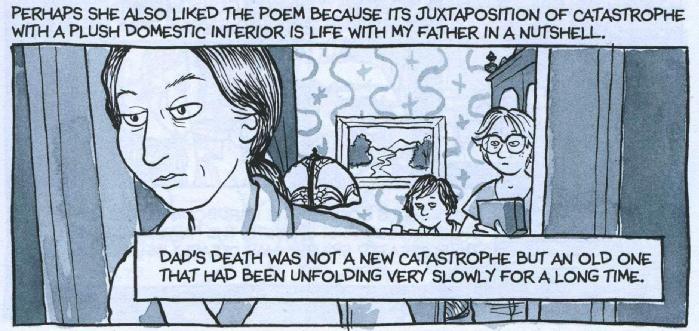EN390 Words & Images
15 CATS - TERM 2 only

OVERVIEW
What’s the difference between words and images? Must the verbal and the visual always be seen in opposition? When is an image a text, and a text an image? And what methods do we have for thinking critically about how words and images work together? In this module students will address these question through a series of readings that foreground the practices of ekphrasis and intermediality. We will look at poems that describe paintings, plays that show artists at work, novels that probe how we engage with images (painted and digital), and we will also spend time with forms – the graphic novel, the illuminated manuscript, the political cartoon – that combine words and pictures in complex ways. In doing so, students will be encouraged to put critical pressure on the coherence and utility of “word” and “image” as categories, and to explore the relationship between text and image in a variety of formal and historical contexts.
SYLLABUS (Provisional)
Each week students will read a primary text, or selection of short texts, alongside a key critical/theoretical essay.
1. Word vs. Image
- Introductory seminar + a lecture: “Word vs. Image: From Iconoclasm to the Aesthetic”
- Excerpt from Gotthold Ephraim Lessing, Laocoon: An Essay on the Limits of Painting and Poetry
2. Ekphrastic poetry 1
- Andrew Marvell, “The Gallery” (1650s); John Keats, “Ode on a Grecian Urn” (1819); P. B. Shelley, “On the Medusa of Leonardo Da Vinci” (1819); Robert Browning, “My Last Duchess” (1842); Christina Rossetti, “In an Artist’s Studio” (1857)
- James Heffernan, “Ekphrasis and Representation”
3. Ekphrastic poetry 2
- W. H. Auden, “Musée des Beaux Arts” (1939); William Carlos Williams, “Landscape with the Fall of Icarus” (1962); Stevie Smith, “Breughel”; Sylvia Plath, “Two Views of a Cadaver Room” (1960); Anne Sexton, “The Starry Night” (1962); Thom Gunn, “In Santa Maria del Popolo” (1961)
- W. J. T. Mitchell, “Ekphrasis and the Other”
4. Iconotexts: beyond the word-image opposition
- First page of St. Luke’s gospel in the Lindisfarne Gospels; William Blake, plate 5 of Illustrations of the Book of Job (1823-6); James Gillray, The Blood of Murdered Crying out for Vengeance (1793); perfume advert by Dolce & Gabbana (2015)
- Roland Barthes, “The Rhetoric of the Image”
- Excerpt from Mieke Bal, Reading “Rembrandt”: Beyond the Word-Image Opposition
5. Art history and the politics of attention
- T. J. Clark, The Sight of Death (2006)
6. READING WEEK
7. Melodrama and the tableau vivant
- Douglas Jerrold, Rent Day (1832)
- Martin Meisel, ch. 8 of Realizations: Narrative, Pictorial, and Theatrical Arts in Nineteenth-Century England
8. Art and ideology in the radio play
- Howard Barker, Scenes from an Execution (1984)
- Excerpt from David Freedberg, The Power of the Images
9. Ekphrasis in the contemporary novel: from the fresco to the screen
- Ali Smith, How to be Both (2014)
- Extract from Jay David Bolter and Richard Grusin, Remediation: Understanding New Media
10. The graphic novel
- Alison Bechdel, Fun Home (2006)
- Excerpt of Scott McCloud, Understanding Comics
TEXTS TO PURCHASE
Many readings will be made available to students online or by handout. Students will be expected to purchase only the key readings for weeks 5 (A Sight of Death), 9 (How to be Both) , and 10 (Fun Home).
ASSESSMENT
1. Close reading exercise on an ekhprastic poem (1,000 words)
2. Either:
a) An essay of 3,500 words
b) A creative project + 1000 word reflective essay
